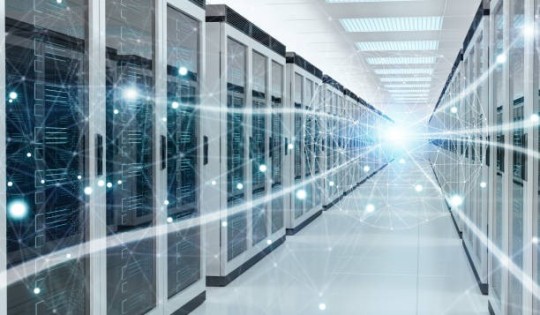Don't wanna be here? Send us removal request.
Link
0 notes
Text
Computer Networking-Securing Your Wireless Connection
I t is common for people to visit coffee shops and restaurants that offer WiFi. These places can be used for business meetings or lunch breaks. They also have access to the Internet. As we know these hot spots, it is helpful to have them. However, I would like to discuss the importance and security of your home or company's wireless signal. Many people now have wireless routers and high-speed Internet access in their homes. For most people, we simply go to the office depot or Best Buy and buy the wireless router. Then we take it home, plug it in, and start surfing the Internet sophos Colombia .
The problem with most wireless routers is that they aren't set up properly right out of the box. You could also be giving your neighbor, or someone else in a car, access to your wireless Internet. Some people do not mind leaving their wireless internet unencrypted, but allowing others to connect. I'd like to show you some of the possible dangers associated with wireless signals that are not secure.
Unsecure Networks:
Wireless signals and networks that are insecure can allow neighbors or anyone else using the signals to reach your Internet to surf the web. This can lead to many issues. It could happen that your neighbor owns a laptop and wireless card. They could connect and download music. You may not be aware that they could potentially download thousands to hundreds of songs from you ISP (Internet Service Provider). It is possible that your ISP will contact you via telephone or mail to alert you that someone is downloading illegal music.

You could lose your Internet connection in such situations. Worse still, someone could sue you from the RIAA for illegally sharing and downloading music.
There are other things that can happen when your wireless signal is not secure. For example, someone who connects to your wireless might be able to view your shared files. You may also be able for them to view some of the files. Imagine having bank statements, social security numbers, addresses, telephone numbers, etc. You could be setting yourself up for identity theft.
These are the steps you can take to protect your network
It is important to secure your wireless signal, so that only authorized users can access it. There are many methods to secure your wireless signal including WPA Encryption, WEP Filtering, and MAC Filtering. All of these options are designed to keep unauthorised people from your wireless connection.
0 notes
Text
Protect Your Wireless Broadband
After you have set up your wireless broadband connection correctly, you need to make sure it is secure. While a broadband wireless network is not susceptible to solid objects and does not require wires, it can be affected by other people who know. If you don't make your network secure, it will allow neighbouring homes to have access to your broadband internet connection and data. This article will show you how to make your home and small business networks more secure.
To help protect your network against unwelcome access, there are a few easy steps you can take:
Your wireless router can be used as a wired router or disabled wirelessly. Connect a cable to your router and the device you want to use.

Your router's security features (wireless/modem), must be turned on. They are often turned off by default.
You can create a personal name (SSID) for your network. This allows you to quickly find your network, even if there are many wireless devices around.
To secure your network, use encryption (WPA/WPA2/WEP). If you don't have WPA/WPA2, only use WEP cisco Colombia .
You should also make sure encryption is enabled on all wireless adapters you use to connect to devices in your network.
If children have access to the network, you can use parental controls.
All connecting devices must have Firewall and Antivirus software.
These simple steps will help you establish a secure network. You can also avoid unauthorised access to your wireless devices. This advice is for you if you are concerned about your personal data.
0 notes
Text
Planning Network Security

Computer Security and Network Security
Computer/network security includes:
Control of physical access to computers / networksPrevention of accidental data Erasure, modification, compromise Prevention and detection of Intentional breaches of internal security Hacking is an unauthorized intrusion from the outside.
To prevent a network intrusion, all three legs must be present:
Motive There are many reasons to compromise your security What does it mean? The ability Opportunity You have the chance to join the network Broadcom Colombia Administrators have no other options than to control events through this last item.
Principles of Network Security Sometimes network security goals can be identified as Confidentiality. Only the intended recipient and sender should see the message Integrity. Both the sender and the receiver want to ensure that the message does not get altered during transit or afterwords. Authentication Both the sender and the receiver need to confirm each others identity. Access to services and resources is essential. Understanding Risk Management: Security is based on the principle that no network can be completely secured. Information security is primarily about risk management. Security threats are more severe for assets that are more valuable. Therefore, you need to invest more resources in protecting them. Understanding Risk Management - 2: Administrators respond to security threats in the following three ways, even if they don't have any training: You can ignore the threat or accept it, but you cannot prevent it from happening. Ad hoc approach to the threat Try to secure all assets completely, regardless of usability or manageability. None of these strategies account for the true risk and will often lead to long-term failure. What are some of the risks? Eavesdropping Interception of messages Hijacking Assuming the role of sender or receiver. Insertion Transform messages into active connections Impersonation Spoofing any field or source address in a package Denial of Service (DOS). You must prevent others from having access to your resources. This is usually done by overloading the system. Management of Risk Once assets and threats are identified, risk management can be implemented. Acceptance Mitigation Transference Avoidance Take the risk: You accept all security threats to assets if you don't take proactive steps. Accept risk only when there are no reasonable alternatives or the cost is too high. It is always a smart idea to have a contingency plan in place when you accept risk. A contingency plan outlines a series of actions that will take place after the risk has been realized. This will reduce the potential loss of the asset. Mitigating Risk: Security risks are the most popular method to secure computers and networks. You can mitigate security risks by taking proactive steps to either reduce asset exposure to threats, or decrease dependency on asset. One simple example is installing antivirus software. Transferring risk There are many benefits to transferring security risk to another party, including: Economies-of-scale, such as insurance. Utilize the expertise and services of another organization Use a web hosting company as an example. This type of risk transference should be described in a contract called a service-level agreement (SLA). Avoiding Risk: Accepting risk is not the same as avoiding it. You must eliminate the source of the threat or expose to it. Or your organization's reliance on the asset. Avoiding risk is generally when there are few or no options to mitigate or transfer the risk or when the risks of taking on the risk outweigh the benefits. A compromised military or law enforcement base could pose a danger to lives. Implementing security: Security is the granting of the fewest privileges necessary to accomplish the task. Consider the following example: A network administrator accidentally opens an e-mail attachment which launches a virus. Administrator privileges will be granted to the virus if the administrator logs in as the domain administrator. This will allow the virus unrestricted access on almost all computers within the domain. Defense in Depth Think of the security of your network in terms of a series layers. Every layer you remove brings you closer to the center, the key asset. Protect each layer of your network as if it were ineffective or nonexistent. Your network's security will be dramatically increased if you can defend at all levels and increase fault tolerance. You could use email client software to prevent users from sending viruses via e-mail. It blocks potentially dangerous file types, blocks potentially dangerous attachments based on their file type and makes sure that users are running under restricted user accounts. Reduce the Attack Surface An attacker can only attack your network with one vulnerability. You must be able to identify all vulnerabilities in order to protect your network. You have a better chance of protecting your assets and accounting for them. You will have fewer targets for attackers, which will make it easier to keep track of and monitor. You can, for example, disable certain services and unneeded software to reduce the attack surface on individual computers in your network. Security Objectives Controlling physical access Servers Workstations that are networked Network devices Cabling plant Be aware of security concerns with wireless media that is connected to portable computers. Recognize the security risk Allow data to be printed. Floppy disks, CDs and tapes are all included. Recognizing network security threats These are some tips to help protect your network. Question: Who or what are they protecting if you don't answer? Who: Types of network intruders, and their motivations. What are the types of network attackers? How do they work? These questions are the foundation for performing a threat assessment. An extensive threat analysis should result from brainstorming between people with knowledge about the industry, business, and security. It is possible to classify specific types of attacks: Social engineering attacks DOS attacks Scanning and spoofing Source routing and other protocol exploits SOFTWARE and system exploits Trojans, viruses and worms To be able to effectively deal with these threats, it is crucial to fully understand their nature. How to design a Comprehensive Security Plan RFC2196 is the Site Security Handbook. Identify the things you are trying to protect. Know what you want to protect it. Find out how likely you are to be affected by these threats. You can take cost-effective measures to protect your assets. You should review the process regularly and make any necessary improvements if you find a weakness. How to create a security plan Three aspects will make up your security plan. Prevention: The measures taken to prevent your data from being altered, destroyed or compromised. Detection is the process of identifying when there has been a security breach or attempted breach. Reaction is the process of restoring security from a breach. It includes the recovery of lost or altered data, the restoration of system or network operations and prevention of future incidents. Security Ratings The U.S. government offers specifications for rating network security implementations in a publication known as the Orange Book. It is also known as the DOD Trusted Computer System. TCSEC Evaluation Criteria The TCSEC evaluation is explained in the Red book or Trusted Network Interpretation (TNI). Computer networks are subject to certain criteria. Canada has similar security rating systems. CTPEC Security Ratings: -2 Companies often need to have a C2 rating in order to be eligible for a government contract. There are many requirements for a C2 rating. It is essential that the operating system used be able to track access to data. This includes who accessed it as well as when. Access permissions are required to ensure that users have access to objects. Users are identified by their username and password. Security-related events can easily be tracked and recorded permanently for auditing (audit log).
0 notes
Text
Next Generation Firewalls Ensure Network Security
Your network is exposed to viruses, malware, and other 'contaminated stuff' once it connects to the Internet. No matter how large your company is, it is vital to ensure that your network is secure. Because most businesses are dependent on computers, it is important to ensure that your network is secure. This can compromise data integrity and cause serious damage to any company's health. Network firewall is the best way to protect your network against serious security threats.
Business organizations must ensure that each computer is safe. A network firewall blocks communication between computers within a network. Firewalls can prevent viruses and hackers from getting to your computer. You can program firewalls to stop employees from sending confidential data outside the network. A firewall can make a big difference in ensuring safety on a computer network cisco Colombia .

To protect themselves from all threats, organizations need a complete network security system. Next Generation Firewalls (NGFWs), promise the best network security for companies. NGFWs have the same capabilities as traditional firewalls like packet filtering, network address translation (NAT) and intrusion prevention. They also offer other useful features such as deep packet inspection and intrusion prevention that traditional firewalls do not.
It is important to point out two limitations that render traditional firewalls obsolete.
First, traditional firewalls cannot inspect the data payload in network packets.
They don't know how to differentiate between different types of web traffic.
NGFWs can effectively overcome these limitations and ensure network security. Application awareness is the main feature that differentiates next-generation firewalls from traditional firewalls. NGFWs can recognize web applications using different techniques, which is a significant improvement over traditional firewalls. NGFWs can filter traffic based upon specific applications, rather than opening all ports. They can block malicious web applications and protect businesses against being hacked.
Next-generation firewalls can make your network secure from all security threats. NGFWs prevent harmful malware from infecting the network by intercepting web server traffic. It is also important that businesses adopt a proactive approach to protect their network by using iPv6 firewall. This will be extremely helpful as the IPv4 Internet address system changes to IPv6. Many companies offer network firewall and ready firewalls for business organizations around the globe.
0 notes